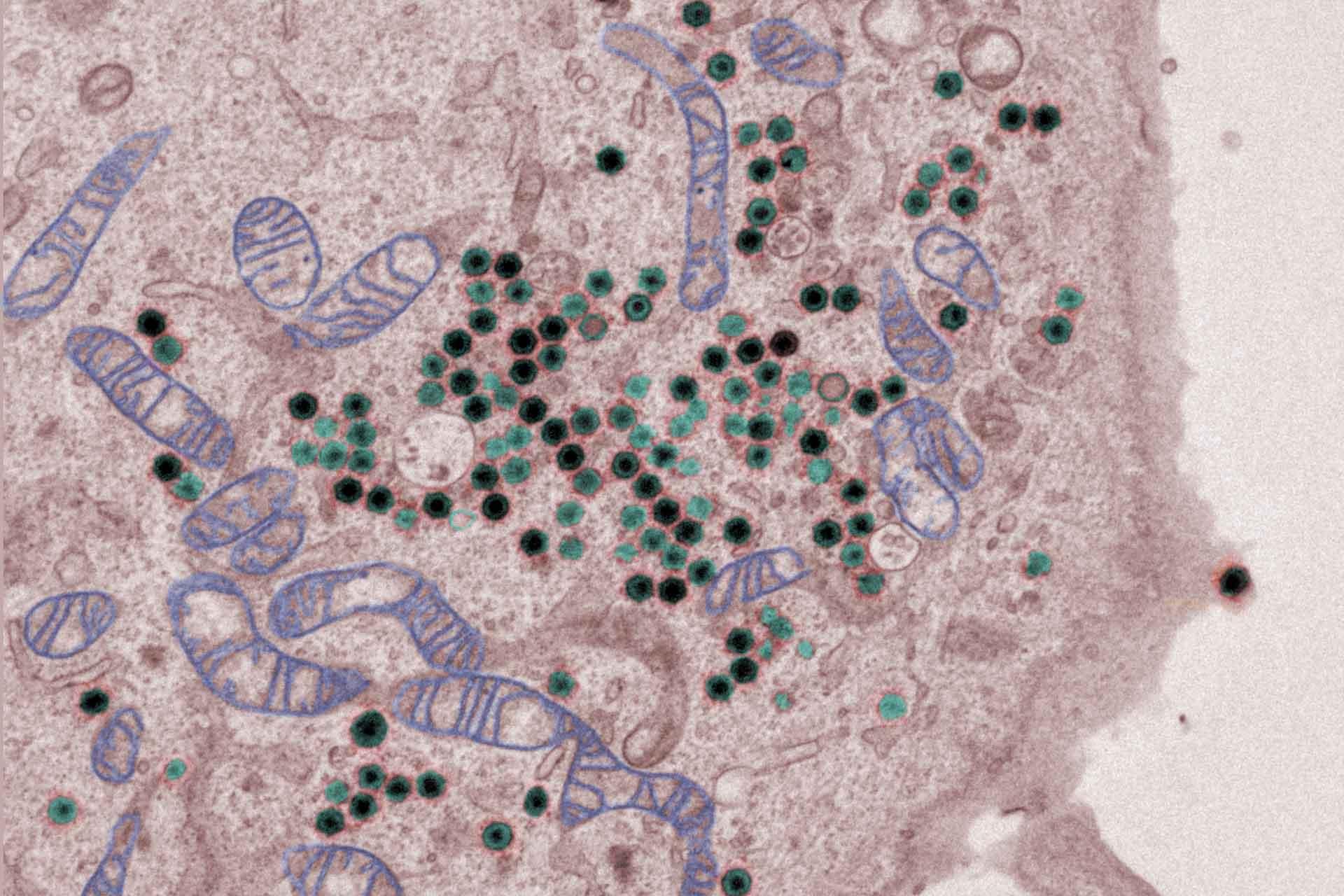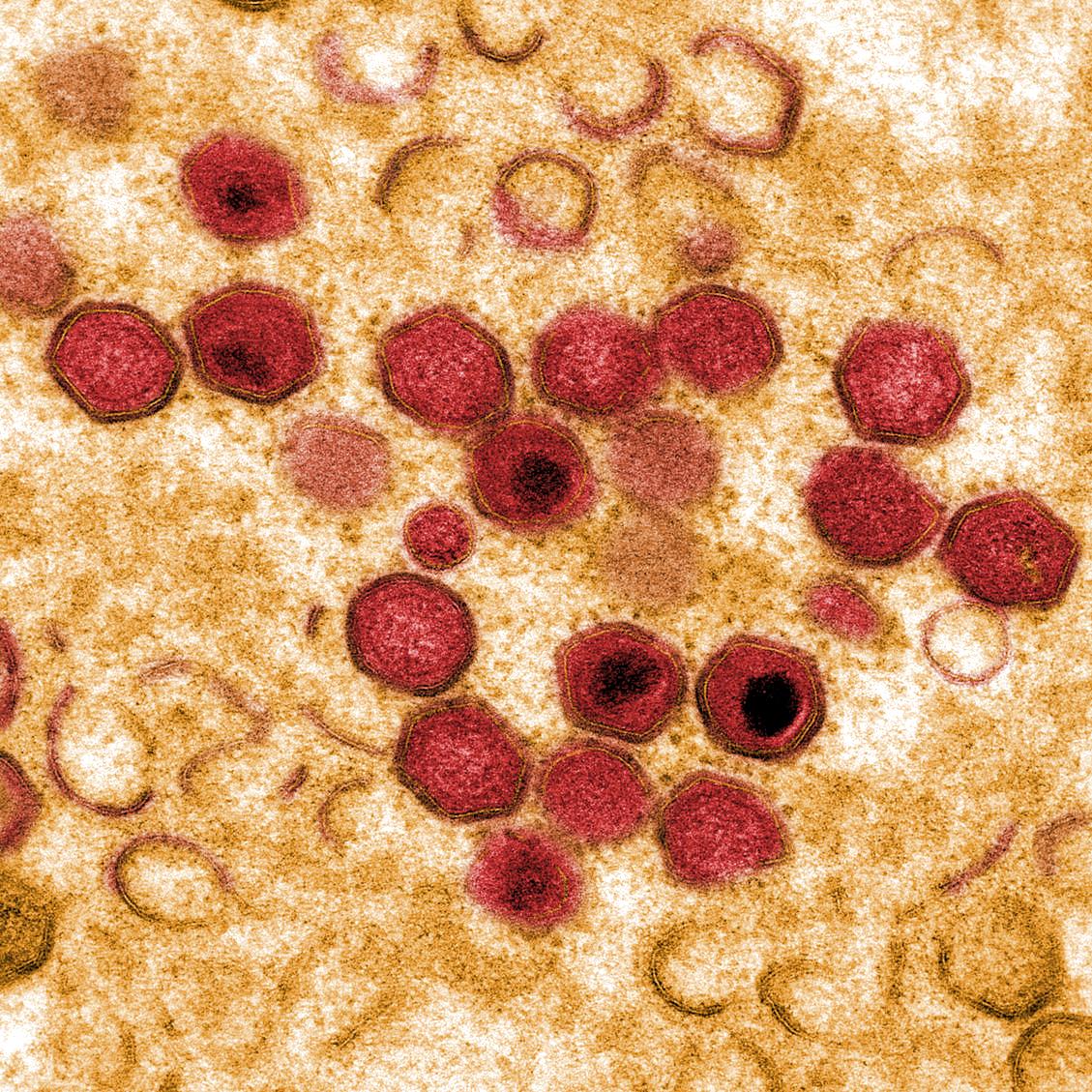A major challenge in developing strategies to fight African swine fever virus is the lack of knowledge of how viral proteins interact with the proteins of the cells which it infects.
Cells are complex structures that contain thousands of different proteins that are involved in a myriad of tasks ranging from the spatial organization and shape of the cells, production of new proteins, sugars, lipids, nucleic acids as well as any housekeeping and maintenance. Proteins also play a vital role in communicating within and between different cells and cell types.
Viruses are obligate parasites that need to harness cells and their proteins in order to successfully make copies of themselves and survive. Whenever a virus infects cells a struggle arises between the cellular or host proteins and their viral counterparts. With thousands of host proteins and multiple viral proteins these networks of interactions can become incredibly complex and the science of interactomics is how biologists try to solve this problem.
The African swine fever virus interactome (ASFVint) project is a major international collaborative project to understand the breadth, depth and impact of African swine fever virus' interactions with its host.
The project will use high-throughput systems biology approaches to map interactions between viral and cellular proteins in a systematic way. Six partners from leading research institutes in Europe will combine their expertise in African swine fever virus and protein-protein interactions to define and validate the first African swine fever virus interactome.
By the end of our project we aim to make an African swine fever virus interactome map to the same or a better standard than the herpes simplex virus map. We'll do this using three complementary approaches.
Breadth
African swine fever virus has more than one hundred and fifty genes and we only understand the role of a few of these in the life cycle of the virus. Looking at all of these genes at once would take be a massive undertaking so we will look for pig proteins that interact with more than eighty viral proteins that we have selected using several overlapping approaches. This will provide the basic outline of the map that we will use to build the African swine fever virus interactome.
Depth
We will take a deep dive into some of the interactions of pig and viral proteins. Can we detect direct interactions between pairs of proteins in pig cells? Which parts of the proteins interact with each other? Can we detect protein-protein interactions involving multiple proteins?
Impact
We will test the importance of interactions during African swine fever virus infection by looking at the level of the host cell and the virus itself. What effect does modifying or deleting host genes effect the ability of the virus to replicate in the cell? How does modifying or deleting viral genes have on the virus? Do these changes affect the ability of the virus to disrupt the cell's pathways? Are any cellular proteins essential for the virus to make copies of itself?
Research group
Funding
Collaborators
Ploufragan-Plouzané-Niort Laboratory at Agence Nationale de Sécurité Sanitaire de l'Alimentation, de l'Environnement et du Travail (ANSES), France.
Laboratory for Biochemistry and Protein Analysis at Friedrich-Loeffler-Institut (FLI), Germany.
The Biology of Orbiviruses Team at Institut National de Recherche pour l’Agriculture, l’Alimentation et l’Environnement (INRAE), France.
The Biotechnology Department of Instituto Nacional de Investigación y Tecnología Agraria y Alimentaria (INIA), Spain.
Bioinformatics, Algorithmics and Data Mining Group at the Institute of Computer Science of the University of Tartu, Estonia.




